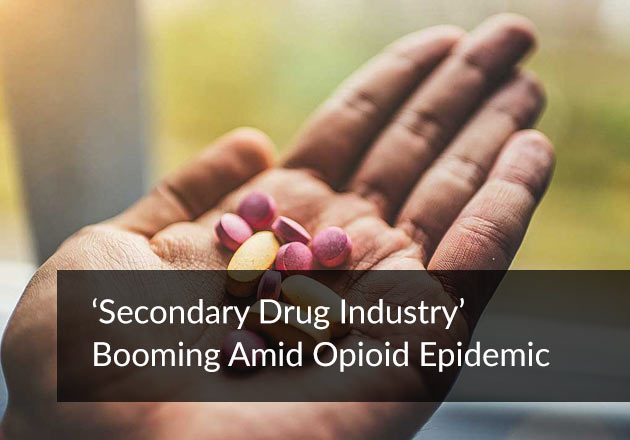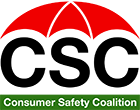
Written by Jessica Wakeman | Healthline
In 2014, more than 240 million prescriptions were written for opioids.
That is more than enough to “give every American adult their own bottle of pills,” the U.S. Department of Health and Human Services noted.
That same year, the Centers for Disease Control and Prevention (CDC) stated that 2 million people were abusing, or were dependent on, prescription opioids.
And as dependence on the highly addictive pills booms, so does the secondary industry of medications that treat the symptoms of addiction.
Other medications reverse overdoses.
Still other meds have been created to treat common side effects of opioid addiction treatment, including constipation.
This has created a booming secondary industry of drugs related to the opioid epidemic.
Opioids in America
Opioids include both illegal and legal substances.
Illegal opioids include heroin and opium, while the legal ones (also known as pharmaceutical opioids) include methadone and morphine, along with oxycodone and hydrocodone, which appear in brand name prescription painkillers like Vicodin and OxyContin.
The latter are commonly prescribed for severe pain, chronic pain, or end-of-life care.
According to The Washington Post, it’s estimated that opioids are a $13 billion dollar a year industry.
Legal opioids, like oxycodone, and illegal opioids, like heroin, are “very closely related, and the effects they produce are indistinguishable,” explained Dr. Andrew Kolodny, a senior scientist at Brandeis University, and executive director of Physicians for Responsible Opioid Prescribing.
“An experienced heroin user can’t tell one from the other,” he told Healthline. “When we talk about opioid pain medication, we’re essentially talking about heroin pills.”
According to the most recent data analyzed by The New York Times, an estimated 65,000 people died of drug overdoses in the United States in 2016, the majority of them from opioid overdose.
That’s an increase of nearly 20 percent compared with the number of drug overdose deaths in 2015.
It exceeds the number of gun deaths, car crash deaths, and deaths from HIV.
Drugs to control drug addiction
A segment of the opioid medication market deals with getting people hooked on opioids off those drugs.
In fact, the use of such medications is an essential part of the U.S. Department of Health and Human Services’ opioid initiative, which lists medication-assisted treatment (MAT) as one of its top three goals.
MAT’s opioid treatment program, or OTP, combines behavioral therapy with medication to treat people with opioid dependence in a clinical setting.
As part of the OTP, medical professionals may become credentialed to treat people addicted to opioids, and prescribe either buprenorphine or a combination of buprenorphine and naloxone.
Buprenorphine is a Schedule 3 controlled substance used to treat opioid addiction by suppressing the symptoms of withdrawal, according to the National Alliance of Advocates for Buprenorphine Treatment.
Naloxone, also known as Narcan, blocks or reverses the effects of opiates and can be used to stop overdoses.
In May 2016, the FDA approved Probuphine, a buprenorphine implant that stays in the skin for six months at a time.
Suboxone Film dissolves in the mouth and contains buprenorphine and naloxone.
There’s also another drug, Vivitrol, billed as “the first and only non-addictive once-monthly medication that, when combined with counseling, is proven to help prevent relapse to opioid dependence, after detox.” It does so by blocking opioid receptors to the brain.
Treating the side effects
Other drugs have been created to treat the side effects of opioids and used to help people during withdrawal.
During the 2016 Super Bowl, viewers watched a commercial for a product called Movantik, also known as naloxegol, which eases constipation in adults who use opioids.
Critics accused AstraZeneca, the makers of Movantik, of exploiting the opioid public health crisis by showing their ad during one of the most-watched television events of the year.
At the time, then-White House Chief of Staff, Denis McDonough tweeted, “Next year, how about fewer ads that fuel opioid addiction and more on access to treatment. #SB50”
In a statement, AstraZeneca told CNN it was simply trying to reach people who may be suffering.
However, Kolodny is wary about treating drugs with more drugs — not because it’s a bad thing to use medication to treat opioid addiction, but because the number of prescriptions can get out of hand.
There is even a name for this phenomenon. It’s called a “drug cascade.”
A “drug cascade”
A “drug cascade” refers to when doctors prescribe pills to treat something and then write a second prescription to treat the side effects of the first pills that were prescribed.
Then, a doctor may prescribe a third drug to treat the side effects of the second prescription — and so on.
What can happen with opioids, Kolodny explained, is that people will feel anxiety when their body acclimates to the opioids.
They may return to their physician complaining of anxiety and be prescribed an anti-anxiety medication like Xanax.
But some anti-anxiety meds are sedatives, so a physician may also prescribe Ritalin, an amphetamine, to stave off feelings of drowsiness.
But the Ritalin may make it difficult to fall asleep at night, so the physician prescribes Ambien.
On top of all that, a person may be severely constipated from the opioids and acquire a prescription for Movantik.
“That’s classic drug cascade,” Kolodny said. “Pharma wins either way. Now that they created this crisis, they can make money selling medicines to treat people harmed by the crisis they created.”
However, Kolodny noted that he does not consider buprenorphine and naloxone in that category of drug cascade.
“The majority of people who are opioid-addicted are unable to recover from their addiction with abstinence-based approaches — approaches like 28 days in a rehab or checking into a hospital to get detox,” Kolodny explained. “That doesn’t work for most people.”
Kolodny’s hope is to discourage doctors from overprescribing pain pills in the first place.
“The bulk of the prescribing [of opioids] is for common conditions where opioids are more likely to harm a patient than help a patient,” he explained.
This is problematic because it does not take much to become physiologically dependent on the drugs, and “you feel awful when you try and come off,” he added.
However, Maia Szalavitz, a neuroscience journalist, and author of “Unbroken Brain: Why Addiction Is a Learning Disorder and Why It Matters,” pointed out medications are ultimately providing comfort to people who, in one way or another, are in severe discomfort and pain.
“I don’t see why they shouldn’t have help with this uncomfortable side effect [of constipation],” she told Healthline.
In other words, the problem is not the drugs themselves, but the profit-making industries behind them, she said.
“Pharma is morally responsible for its bad actions and lies,” Szalavitz said. “But I think the real crime here is what is legal for them to do and how unregulated their marketing is.”
